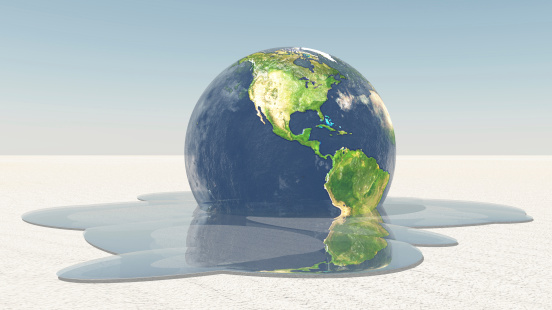The American Psychiatric Association’s (APA) monthly “Healthy Minds” poll recently found that a large percentage of Americans believe their physical and mental health are being negatively impacted by climate change. APA President Vivian Pender, M.D., believes this is a real impact of climate change itself on the population. In reality, what the poll is measuring is the psychological damage generated by the mainstream media’s nearly continuous stream of false, alarming claims that the world faces an “existential” climate crisis.
According to the poll, “58% of adults believe climate change is already impacting the health of Americans and nearly half (48%) agree that it’s impacting the mental health of Americans.”
In 2019, a group of more than 170 news organizations and journalists, led by the Columbia Journalism Review, The Nation, and The Guardian, teamed up to push “a week’s worth of climate coverage in the lead-up to the United Nations Climate Action Summit in New York on Sept. 23.” Kip Hansen did a nice analysis of the coordinated propaganda event at WattsUpWithThat.
Everyone paying attention knew we were in for much more than just a week’s worth of propaganda. Most likely, we were getting a glimpse behind the curtain.
Climate alarmism has been rampant for decades. However, with the lightning-fast reach of social media and coordinated efforts from businesses eager to get in on the “green gimmies” from government, it has only become worse. When was the last time you heard about a weather event that was not tied to climate change?
Even more worrisome, the poll shows that today’s youth are especially frightened.
Per the APA poll, “Young people were more anxious about climate change. Of those aged 18-34, 66% were anxious about its effect on the planet, 51% were worried about its impact on their mental health, and 59% worried about its impact on future generations. They were also more likely to believe it was already having an effect on the health (64%) and mental health (57%) of Americans.”
I know the power that the education system holds over a young mind. From my earliest encounters with the sciences in school, the idea that we humans were destroying the planet in one way or another was ubiquitous. In middle school, it was very common in science class to calculate your home’s “carbon footprint” for homework assignments. I also had a teacher who berated students for using too much water at home.
To impressionable kids, this is a horribly heavy burden to carry.
Starting in elementary school and going all the way through high school, the lessons are repetitive in a way that makes them feel almost liturgical. In many high school curriculums, including AP (Advanced Placement) sciences, the theory that carbon dioxide is the control knob for Earth’s temperature is not questioned or challenged. A student who does so is in for an uphill battle unless he or she has a very open-minded teacher.
Unfortunately, most kids don’t really question what they’re being taught, to look skeptically at things and wonder if it’s true. It is not that they’re dumb or careless, but they do, by and large, believe that their teachers are trustworthy, that at least what they are being taught is not false.
Nor do I blame most teachers. The textbooks and the curricula include these lessons, why dig too deep? There are, of course, fanatics and radicals among teachers (more and more, it seems). But, who or what created them?
Answer: The media, which greatly amplifies alarmism. If it weren’t for the fevered pitch of anxiety and dire warning laced into every media report of every weather event; every time it is hot (or cold), dry (or wet), climate change would be a scientific area of interest like any other, and countless attribution scientists would be out of work.
The scientific journals play to the media; they boast more and more extreme headline-grabbing studies, and soon enough you get decades of “last chances” to save the planet. Social media has a role in all of this too, almost anyone who defies the climate alarm narrative is censored.
Fortunately the fears of those polled are unwarranted: data show that not only are climate-related deaths way down, most severe weather events are trending downwards too.
Of course, there is always the chance that these poll numbers are total garbage anyway, achieved with leading questions and selection bias. In that case, numbers like these are meant to make those not in these groups feel like they are “outside” the norm, elevating their concerns.
Don’t let the alarmists fool you or your kids. Engage in critical thinking, question the status quo, and always dig into the data.
And for sanity’s sake – turn off the Weather Channel!
Linnea Lueken (llueken@heartland.org) is a research fellow with the Arthur B. Robinson Center on Climate and Environmental Policy at The Heartland Institute, a nonpartisan, nonprofit research center headquartered in Arlington Heights, Illinois.
Originally published by The Center Square. Republished with permission.



























[…] post Op-Ed: Media are terrorizing public over climate fears appeared first on Heartland Daily […]